Bathroom renovations can be exciting and transformative projects, but they can also be daunting if you’re not well-prepared. Whether you’re looking to refresh the look of your bathroom or completely overhaul its layout, this step-by-step guide will walk you through the process, from initial planning to final decorating touches.
You’ll learn about budgeting, design choices, team assembly, demolition, materials, fixtures, and finishes selection, permits and regulations, and more. By the end of this comprehensive guide, you’ll be well-equipped to tackle your bathroom renovation with confidence and achieve a space that’s both functional and stylish.
The Bathroom Renovation
Bathroom renovations are more than just updating a space; they’re about creating a sanctuary in your home. Whether you’re aiming to increase your property’s value or simply craving a more luxurious bathing experience, a well-planned renovation can make a significant difference. But where do you start?
This step-by-step guide breaks down the bathroom renovation process into manageable phases, ensuring you’re well-prepared for each step. From initial planning and budgeting to final decorating and eco-friendly options, we’ll provide you with valuable insights, tips, and inspiring examples to help you achieve the bathroom of your dreams.
Step One: Initial Planning
Every successful bathroom renovation begins with a solid plan. You need to determine the scope of your project, your goals, and the budget you’re willing to invest. Start by asking yourself key questions: What do you dislike about your current bathroom? What features are essential? Are you considering a full remodel or minor updates? Will you handle the project yourself, or hire professionals?
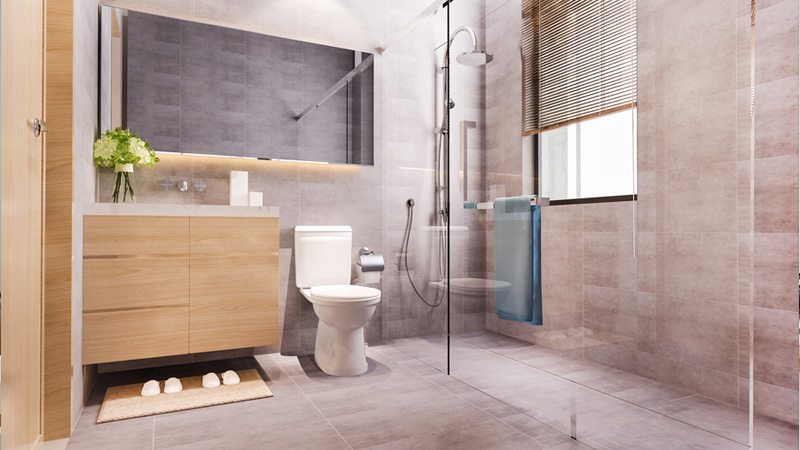
Establishing a budget is a critical first step. Carefully evaluate your financial situation and consider how much you can allocate to the renovation. Include a contingency fund for unexpected expenses. It’s important to be realistic and prioritize your spending. A well-defined budget will guide your decisions throughout the project.
To simplify the planning process, you can create a table or a list with these components:
| Expense Category | Estimated Cost | Contingency Fund (10-20%) |
| Labor and Professional Fees | $X | $Y |
| Materials and Fixtures | $X | $Y |
| Permits and Regulations | $X | $Y |
| Design and Style Choices | $X | $Y |
| Miscellaneous Expenses | $X | $Y |
| Total |
Once you have a clear budget in mind, you can move forward with your renovation project confidently.
Step Two: Get the Team Together
The decision to go DIY or hire professionals largely depends on your skills, the scope of the project, and your budget. While DIY can save you money, it can also be time-consuming and potentially result in costly mistakes. On the other hand, professionals bring expertise and ensure a smoother, faster process. For complex renovations, it’s often advisable to consult or hire experts for plumbing, electrical work, and structural changes.
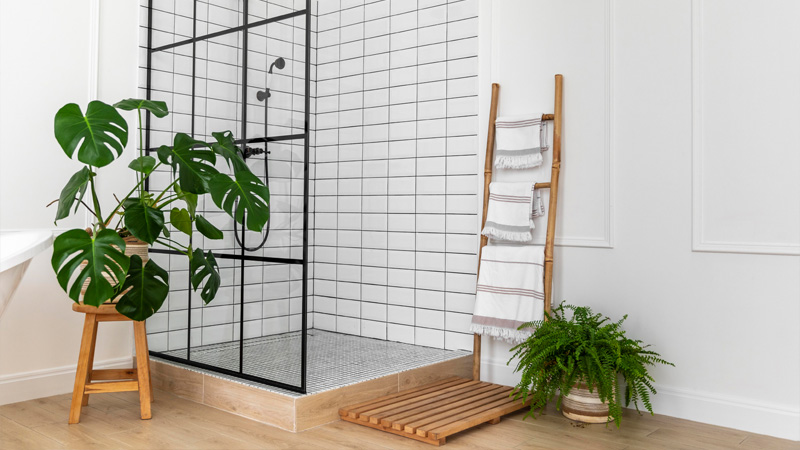
If you choose the DIY route, effective project management is crucial. Organize a timeline, set milestones, and keep a checklist to stay on track. Consider assembling a team of friends or family to help with tasks like demolition and painting. If you opt for professionals, choose reputable contractors, check references, and get multiple quotes to ensure you’re receiving competitive pricing.
Step Three: Disconnect and Demolition
Once your team is in place, it’s time to disconnect and demolish the existing fixtures and finishes. This phase may reveal hidden challenges like plumbing or structural issues that need immediate attention. Be prepared for unexpected changes, and budget for them accordingly. It’s essential to address these challenges promptly to prevent further complications during the renovation.
Before you begin any major work, check your local building codes and obtain the necessary permits. Violating regulations can lead to costly fines and delays. Ensure your renovation project complies with zoning laws, safety codes, and environmental requirements. Having the required permits will also give you peace of mind that your renovation is legal and safe.
Step Four: Rough In
With the bathroom’s structural issues resolved, it’s time to make choices regarding materials, fixtures, and finishes. Consider the style you want to achieve, whether it’s modern, traditional, rustic, or eclectic. Your selections should align with your budget, design, and overall vision.
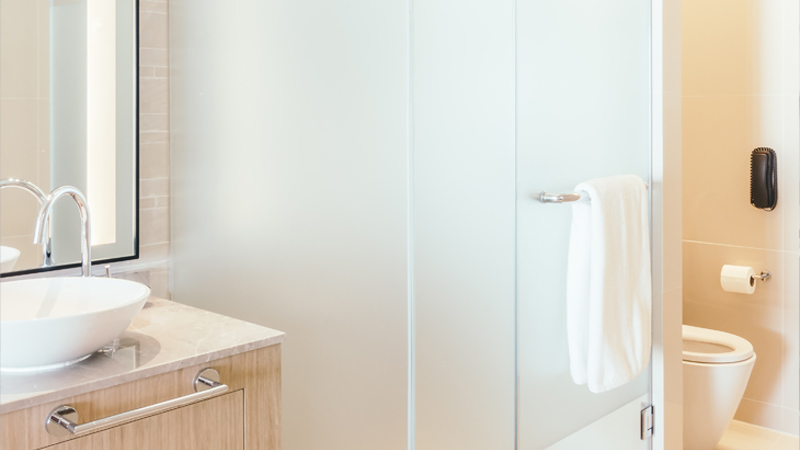
To simplify the process, you can create a table or a list with these components:
| Element | Selection | Price Range |
| Flooring | Tile, Vinyl, Laminate, Hardwood | $-$$$ |
| Wall Tiles | Ceramic, Porcelain, Glass, Stone | $-$$$ |
| Fixtures (sink, toilet) | Contemporary, Vintage, Minimalist | $-$$$ |
| Lighting | Recessed, Pendant, Sconce | $-$$$ |
| Cabinetry | Custom, Stock, Floating | $-$$$ |
| Countertop | Quartz, Granite, Solid Surface | $-$$$ |
| Paint Colors | Neutral, Bold, Pastel | $-$$$ |
| Accessories | Mirrors, Towel Racks, Shelves | $-$$$ |
The choices you make should align with your budget and your vision for the space. Keep in mind that quality materials can enhance the bathroom’s durability and aesthetic appeal.
Step Five: Install Wall and Floor Finishes
With your materials and fixtures selected, it’s time to install the wall and floor finishes. This is where the design choices you made come to life. Whether you’re opting for intricate mosaic tiles or simple subway tiles, professional installation is crucial to achieve a polished look.
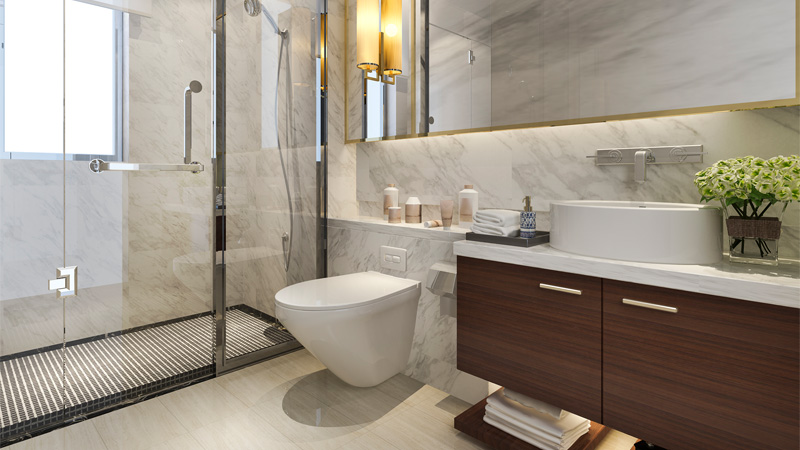
Here are some key considerations:
- Fixture Installation: Ensure that plumbing fixtures like sinks, toilets, and showers are installed correctly. Leaks or improper installations can lead to water damage and costly repairs down the line.
- Waterproofing: Properly waterproof the wet areas of your bathroom to prevent water infiltration and damage to the underlying structure. This is particularly important in shower areas and around the bathtub.
- Tile Layout: Pay close attention to the layout of your tiles. Proper alignment and spacing are essential for a visually pleasing result. For a contemporary look, consider large-format tiles, while smaller tiles can add a more intricate design.
- Grout and Sealant: Use high-quality grout and sealant to prevent moisture from seeping into the tile joints. Grout lines should be consistently spaced and sealed to protect the integrity of the installation.
Step Six: Fit Off, Clean, and Decorate
The fit-off stage involves installing the final fixtures and fittings, including taps, showerheads, towel racks, and accessories. This is where your bathroom starts to take its final shape. Proper fit-off ensures functionality and aesthetics.
Once the installation is complete, it’s time for a thorough cleaning. Remove all debris and dust to reveal your newly renovated bathroom in all its glory. Then, decorate your space with carefully selected accessories and personal touches. Consider adding plants, artwork, and
Eco-Friendly and Sustainable Renovation Options
In today’s world, eco-friendly renovations are not only trendy but also responsible. Here are some ways to make your bathroom renovation more sustainable:
Low-Flow Fixtures
One of the most effective ways to make your bathroom renovation eco-friendly is by incorporating low-flow fixtures. These fixtures are designed to minimize water consumption, which not only conserves this precious resource but also reduces your water bills.
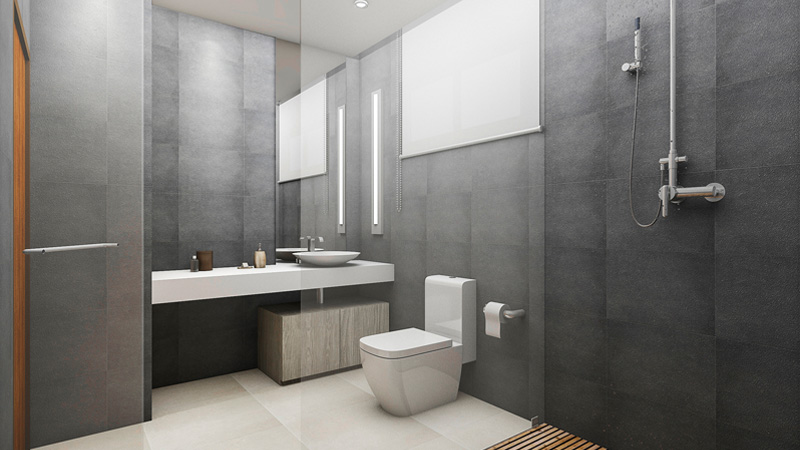
Consider replacing old toilets with dual-flush models that allow you to choose between a full flush and a reduced flush based on your needs. For showers and faucets, opt for water-saving showerheads and aerators, which maintain water pressure while using less water. Low-flow fixtures are a practical and cost-effective choice for environmentally-conscious bathroom renovations.
Energy-Efficient Lighting
Energy-efficient LED lighting is an excellent choice to reduce electricity consumption and cut down on your energy bills. LED lights are not only energy-efficient but also have a longer lifespan than traditional incandescent bulbs. They produce less heat, making your bathroom more comfortable, and come in various color temperatures to create the desired ambiance.
Additionally, LED lighting allows for dimming, so you can adjust the brightness to your liking. When planning your bathroom renovation, explore the many stylish and eco-friendly LED lighting options available to enhance both the aesthetics and functionality of your space.
Recycled Materials
Choosing recycled or reclaimed materials is a sustainable approach to bathroom renovation. For instance, reclaimed wood can be used for vanities, cabinets, or even wall accents, adding a rustic and unique touch to your bathroom. Recycled glass is another option, perfect for countertops or as decorative elements.
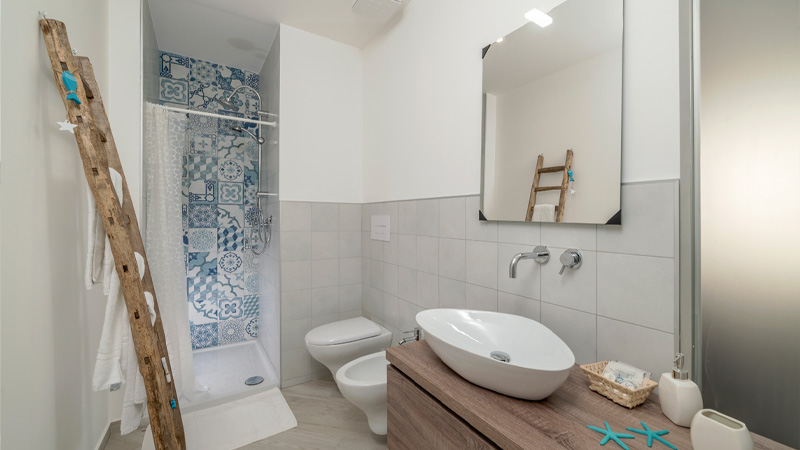
By selecting recycled materials, you divert waste from landfills and reduce the demand for new resources. It’s a responsible and creative way to add character to your bathroom while contributing to a more eco-friendly lifestyle.
Sustainable Flooring
Eco-friendly flooring options can significantly impact the sustainability of your bathroom renovation. Materials like bamboo, cork, and FSC-certified wood are excellent choices. Bamboo is a fast-growing, renewable resource, while cork is harvested without harming the tree. FSC-certified wood comes from responsibly managed forests.
These materials not only look stunning but also have minimal environmental impact. Sustainable flooring adds a natural and warm feel to your bathroom, making it a comfortable and stylish space with a lower carbon footprint.
Proper Insulation
Improving insulation in your bathroom is essential for conserving energy and maintaining a comfortable temperature. Proper insulation helps your bathroom stay warm in the winter and cool in the summer, reducing the need for excessive heating or cooling.
Adequate insulation also prevents condensation, which can lead to mold and mildew growth. It’s a practical and energy-saving step in your renovation that ensures your bathroom remains comfortable and environmentally responsible.
Ventilation
Installing energy-efficient exhaust fans is vital to improve indoor air quality and prevent mold and mildew growth in your bathroom. These fans effectively remove moisture and odors, ensuring a healthier living environment.
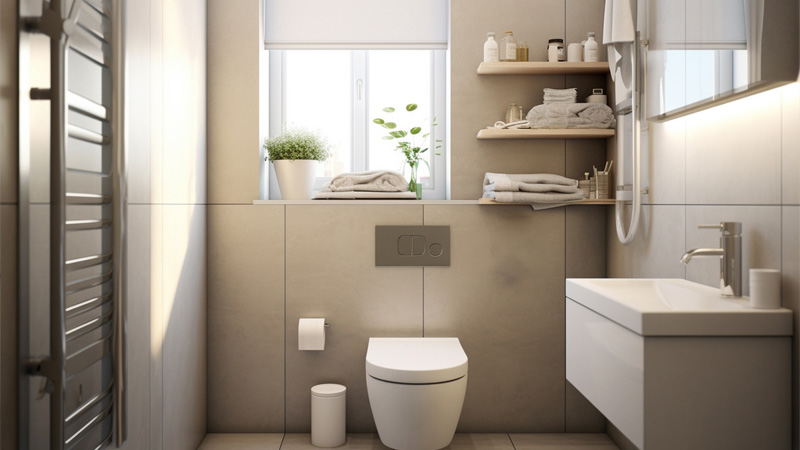
Proper ventilation not only enhances comfort but also contributes to the longevity of your bathroom by reducing the risk of water damage. Look for fans with energy-efficient features to minimize energy consumption and environmental impact while maintaining excellent air circulation in your renovated bathroom.
Repurposing
Repurposing old fixtures and materials in creative ways is an eco-friendly approach to reduce waste during your bathroom renovation. Consider reusing items like mirrors, cabinetry, or decorative tiles by giving them a fresh look with paint or refinishing.
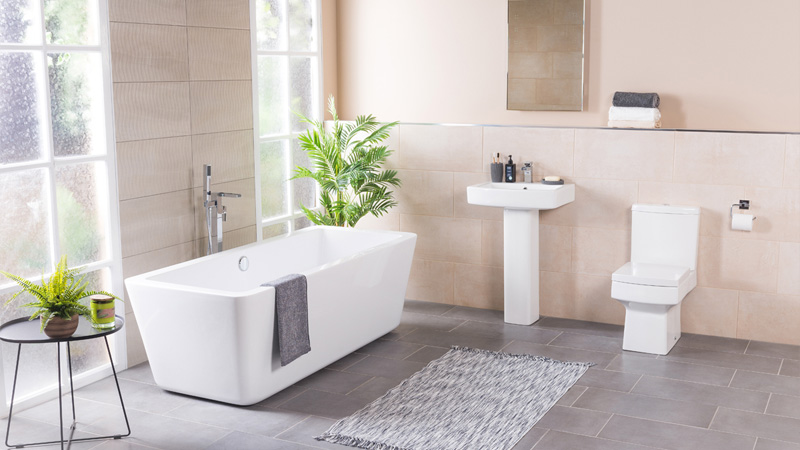
You can also transform an old wooden ladder into a towel rack or turn vintage glass jars into stylish storage containers. Repurposing not only minimizes landfill waste but also adds unique and personalized elements to your bathroom, making it truly your own. It’s a budget-friendly and sustainable way to breathe new life into your space.
Inspiring Examples
To inspire your bathroom renovation project, here are a few different design and style choices and their unique features:
- Modern Minimalism: A sleek and simple design with clean lines, neutral colors, and minimalistic fixtures. This style often features large, unadorned mirrors and frameless glass showers.
- Rustic Charm: Incorporate reclaimed wood, stone, and warm color palettes to achieve a cozy and rustic look. Freestanding bathtubs and vintage fixtures add character.
- Luxurious Spa Retreat: Create a spa-like atmosphere with a free-standing bathtub, a large walk-in shower, and natural materials like marble and granite. Mood lighting and plush textiles complete the experience.
- Beachy Vibes: Bring a coastal feel to your bathroom with shades of blue and white, beadboard wainscoting, and seashell accessories. Incorporate natural light and nautical details for a breezy, relaxed ambiance.
- Bold and Eclectic: Mix patterns, colors, and materials to create an eclectic bathroom full of personality. Play with vintage fixtures, patterned tiles, and statement art pieces for a unique space.
In conclusion, renovating a bathroom is a rewarding endeavor that allows you to personalize one of the most-used spaces in your home. With the right initial planning, budgeting, team assembly, and the right design choices, your bathroom renovation can be a resounding success.
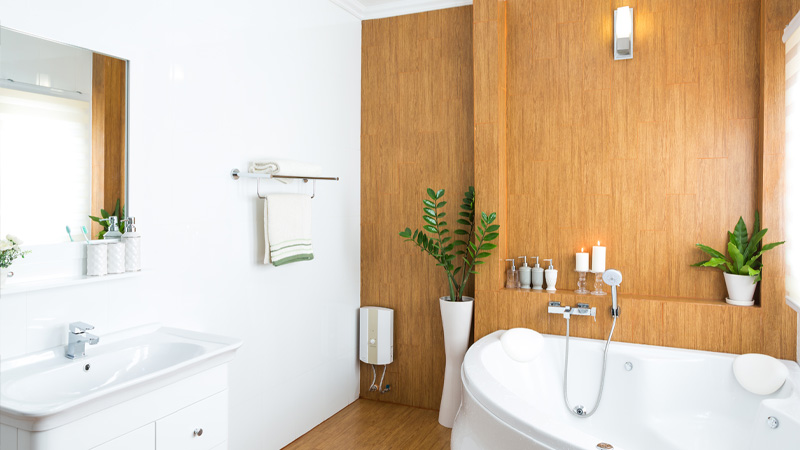
Be prepared for challenges, changes, and unexpected discoveries, and don’t forget to consider eco-friendly options for a sustainable future. By following this step-by-step guide and drawing inspiration from various design styles, you can transform your bathroom into a beautiful, functional, and unique space that suits your tastes and needs.
Good luck with your bathroom renovation journey!

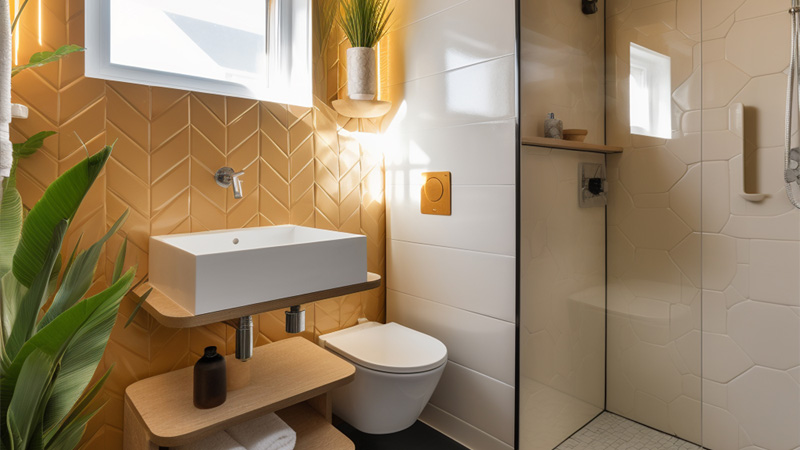
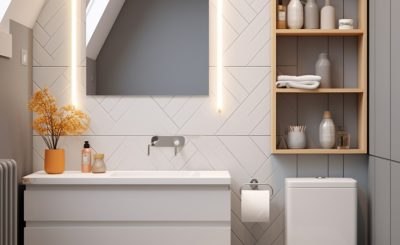
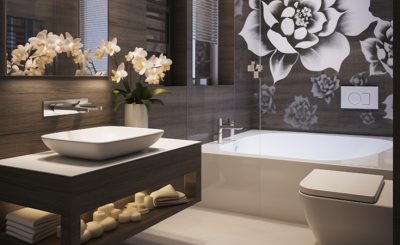
Ron Walker
Are there any government incentives or rebates available for eco-friendly bathroom renovations?
Shamaim
Hi there! In some areas, there are indeed incentives or rebates offered for incorporating eco-friendly elements into home renovations, including bathrooms. It’s worth checking with local authorities or us to see if you can take advantage of such programs. Thanks for reaching out!
Steven Levesque
How can I ensure proper ventilation in my bathroom during the renovation process?
Shamaim
Hi there! Installing a high-quality exhaust fan and considering a natural ventilation system can help maintain good airflow in your bathroom. Proper ventilation is essential for preventing mold and maintaining air quality. Thanks for reaching out!
Mary Ward
Tnx
Shamaim
Your welcome!
Jeff Mitchell
Thank you for including inspiring examples. It’s always great to see real-life renovations that showcase the possibilities for creating a beautiful and sustainable bathroom.
Shamaim
Hi there! It’s great to hear that the article has been helpful for you. Thanks for reaching out!
Julie Wright
This article inspired me to pursue an eco-friendly bathroom renovation. Can’t wait to implement some of these ideas in my own home
Shamaim
Hi there! We’re pleased that you found the article useful. Thanks for reaching out!
Claude Richard
What are the benefits of using low-flow fixtures in a bathroom renovation?
Shamaim
Hi there! Low-flow fixtures can significantly reduce water usage, leading to lower utility bills and a smaller environmental footprint. Plus, they can also help conserve water, which is crucial in regions with water scarcity. Thanks for reaching out!
Nancy Thomas
I never realized that repurposing old items could be such a creative and sustainable approach to bathroom renovation. This article has given me so many great ideas
Shamaim
Hi there! We’re happy to hear that the article was useful. Thanks for reaching out!
Donna McDonald
Is it necessary to hire a professional team for a bathroom renovation, or can it be done as a DIY project?
Shamaim
Hi there! While some aspects of the renovation can be DIY, it’s important to involve professionals for tasks like plumbing and electrical work to ensure safety and compliance with building codes. It’s worth the investment for a successful and long-lasting renovation. Thanks for reaching out!
Ken Fortin
Thanks for the detailed step-by-step guide. It’s really helpful as I’m planning to renovate my bathroom soon
Shamaim
Hi there! We’re glad to hear that the article clears things up. Thanks for reaching out!
Diane Murphy
I love the idea of using recycled materials in the bathroom. It’s a great way to reduce waste and contribute to a more sustainable environment
Shamaim
Hi there! We’re happy to hear that the article was helpful. Thanks for reaching out!
Jean Singh
What are some popular eco-friendly materials to consider for bathroom renovations?
Shamaim
Hi there! You can consider materials such as bamboo, reclaimed wood, recycled glass tiles, and low-VOC paints for a sustainable bathroom renovation. Thanks for reaching out!
George Belanger
Is it possible to convert a shower into a bathtub in a small bathroom during the renovation process?
Shamaim
Hi there! It’s often possible to convert a shower into a bathtub during a bathroom renovation, even in a small bathroom. This can involve removing the shower stall and installing a bathtub in its place. However, it’s important to consider the available space and plumbing requirements when making this change. It’s also a good idea to consult with us to ensure that the conversion is feasible and meets building codes. Thanks for reaching out!